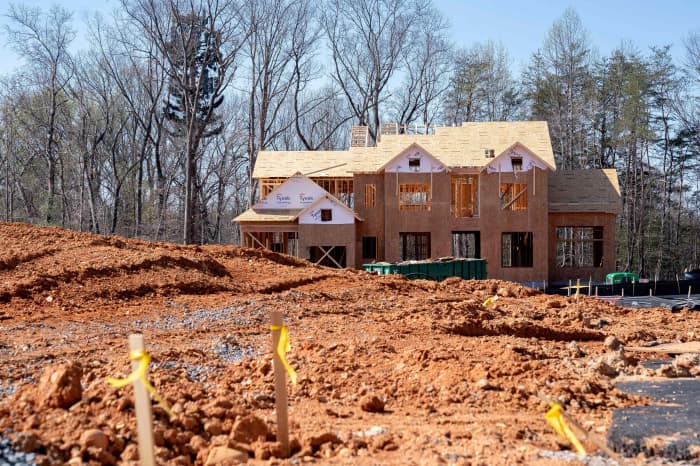Good Morning America
What some lifelong gun owners say about AR-15s

Paul Kemp is the co-founder and president of Gun Owners for Responsible Ownership. A lifelong gun owner and hunter, he said he was driven to create the organization after his brother-in-law Steven Forsyth was killed in the Clackamas Town Center shooting in December 2012 in Oregon.
The gunman in that case, 22-year-old Jacob Tyler Roberts, opened fire in the crowded shopping mall using a Stag Arms AR-15 rifle he had stolen from an acquaintance. In addition to Forsyth, Cindy Ann Yuille was killed in the incident and 15-year-old Kristina Shevchenko was injured. The gunman died by suicide at the scene.

The parade of mass shootings since that fateful day in 2012 have stirred up a tide of emotions within Kemp, he said, including the recent massacres in Buffalo, New York, and Uvalde, Texas. And Kemp said his resolve to get measures enacted to keep guns, especially high-powered AR-15-style rifles, out of the hands of those he says shouldn’t possess them, becomes stronger with each nightmarish mass shooting.

Kemp is one of several longtime gun owners ABC News spoke with who say they want gun control laws and reform. Gun rights extremists, with, they say, the NRA as their bullhorn — no longer represent the majority of gun owners in the U.S.
MORE: Amid gun control pressure, lawmakers to hear from student who survived Texas school shooting
But proponents of the guns say that they are essentially no different than other hunting rifles, are used responsibly for sport and are not the weapons of war that opponents make them out to be.

Defining ‘AR-15’
An AR-15 is a type of semi-automatic rifle, firing one bullet with each pull of the trigger — a contrast with illegal automatic rifles, which fire continuously as long as the trigger is depressed.
“AR-15 style rifles can be made for a variety of bullet calibers and to accept a variety of different capacity ammunition magazines,” said Jake Charles, lecturing fellow and executive director of the Center for Firearms Law at Duke University School of Law.
The guns, which have skyrocketed in popularity, are often referred to as “assault rifles,” but whether that is an apt description depends on who you ask.
“Assault weapon” is a legal term of art. Under the 1994 federal assault weapons ban, which expired in 2004, it was defined as “Semiautomatic rifles having the ability to accept a detachable ammunition magazine and at least two of the following traits” — including a bayonet mount or grenade launcher.
Video: Man says he refused to sell AR-15 style rifle to Nikolas Cruz in 2018
0:32 1:16 Gun shop owner says he turned away Florida shooting suspect from buying AR-15 And I said, well, I don’t sell any farms to
“It’s not a simple yes or no,” as to whether an AR-15-style gun is an assault rifle, Charles told ABC News.
“Often an assault rifle refers to an automatic rifle, like the military’s M4 or M16. In that sense, the AR-15 is not one because it’s not an automatic weapon,” Charles said. “But sometimes an assault rifle is the description for a rifle that is classified as an ‘assault weapon’ under federal or state laws restricting those weapons. For example, under the 1994 federal assault weapons ban, Colt’s AR-15 was specifically listed as a prohibited assault weapon.”
According to Erik Longnecker, the deputy chief of the U.S. Bureau of Alcohol, Tobacco, Firearms and Explosives’ office of public and governmental affairs, public affairs division, “assault rifle” and “assault weapon” are not defined under current federal firearms law.
“Assault rifle and assault weapon are both political terms that are not defined in the Gun Control Act or the National Firearms Act,” he said.
The ATF also does not have a definition for AR-15. “That is a specific model of rifle originally manufactured by Colt who also holds the trademark to that term,” according Longnecker.
“Colt began manufacturing these types of rifles in the 1960s; other manufacturers began producing AR-type variants in the 1970s,” Longnecker added.

According to the National Shooting Sports Foundation, a firearm industry trade association: “The ‘AR’ in ‘AR-15’ rifle stands for ArmaLite rifle, after the company that developed it in the 1950s. ‘AR’ does NOT stand for ‘assault rifle’ or ‘automatic rifle.’ AR-15-style rifles are NOT ‘assault weapons’ or ‘assault rifles.'”
NSSF says that there are millions of such guns in circulation.
Gun owners weigh in
Still, some of the gun owners who spoke with ABC News questioned the need to possess the powerful weapons.
Kemp says the ultimate purpose of an AR-15-style rifle, the gun that was used to killed his brother-in-law, is they are designed to do “a lot of damage.”
And they have.
Although handguns are involved in most shooting deaths, the use of semi-automatic rifles is climbing, said Louis Klarevas, a research professor at Teachers College, Columbia University who specializes in gun violence and safety. In the 1980s, less than 20% of gun massacres involved semi-automatic rifles according to a report he issued as an expert witness in a California court case over banning assault weapons.
In a recent TikTok video that went viral, Benjamin Beers, who said he is a former Marine who served in Kuwait, and was stationed in Camp Pendleton, California, declared he was handing over his AR-15 and 9mm gun to authorities to have them destroyed.
Beers told ABC News the decision was sparked in part by the Uvalde shooting. He also said he wants weapons like the AR-15 banned.
“I would love to see semi-automatic rifles such as the AR-15 banned, if not banned, some major laws changed. It’s the single most effective method used [for killing] … to committing such heinous acts of violence. And we’ve seen it for decades,” he said.
Steve Labbé is also a legal gun owner. He says he is for an outright ban on assault rifles, but thinks such legislation would be tricky to enact.
“The ban of assault weapons is a tricky play on words. I say this because assault weapons can and do use the same ammunition as hunting rifles, and that is where the people who overstate the Second Amendment rights find the gray area.”
After the two most recent mass shootings in New York and Texas even President Joe Biden addressed the nation, calling for a ban on assault rifles.
“We need to ban assault weapons and high-capacity magazines. And if we can’t ban assault weapons, then we should raise the age to purchase them from 18 to 21, strengthen background checks, enact safe storage laws and red flag laws. Repeal the immunity that protects gun manufacturers from liability, address the mental health crisis,” Biden said.
MORE: Biden calls for ban on assault weapons: ‘This time we must actually do something’
Congress has remained in a stalemate with Democrats wanting to push gun control legislation, and most Republicans rejecting those proposals. This week, however, the House passed the “Protect Our Kids Act” which has sweeping gun reform measures including raising the age limit to purchase semi-automatic weapons and banning high-capacity magazines.
Gun rights advocates often tout the AR-15-style rifle as a hunting tool but the gun owners who spoke with ABC News, most of whom hunt, refute that for most hunting scenarios.
“Hunting and self-preservation have no need for high-capacity cartridges, no need for semi-automatic and automatic phases of fire,” Labbé said. “That way, someone who takes offense to their specific type of ammunition being called out because an AR-15 uses the same ammunition (the typical, ‘I hunt rats with an AR-15’) can feel safe in the knowledge that their hunting gun isn’t affected by this ban. We should also acknowledge that hunting guns can be converted to assault weapons as well,” he said.
Kemp also said he wouldn’t use an assault rifle to hunt because of what it does to flesh.
“The way an AR-15 round enters the body … it’s designed to tumble and create a lot of tissue damage,” he said.
In a statement to ABC News, an NRA spokesperson said: “The AR-15 is the most popular rifle in America. Tens of millions of Americans legally own AR-15s for a variety of lawful purposes, including self-defense.”
The gun rights group also stated: “There’s been a growing trend in the number of hunters who choose to hunt with an AR-15” and that “the focus and burden of our laws ought to be on prosecuting violent criminals and in ensuring those with dangerous behavioral issues don’t have access to any firearm.”

In the case of the shooter who killed his brother-in-law, Kemp said, “The young man who was the shooter … there were no mental health issues. That’s just a bogus argument.”
‘God-given right’ argument and proposed solutions
“There needs to be drastic changes taken with this weapon,” Beers said. He said the guns can be custom-built and easily ordered online with a 30-round magazine.
“And it’s always just stuck with me, this isn’t right. This is the same weapon I got issued in the Marines.” he said.
Kemp said that when his family found out that the active shooter who killed his brother-in-law stole the AR-15 which was in a home unsecured, “my first question to the officer …[was] doesn’t Oregon have a safe storage gun law? He said, no. The guy that left the gun on locked and loaded … zero consequences.”
In 2021, Oregon required gun owners to safely secure firearms.
MORE: Why gun control efforts in Congress have mostly failed for 30 years: TIMELINE
Kemp says he is not for an all-out ban of AR-15-type rifles, but said the weapon should fall under the National Firearms Act, which places limits on ownership of “shotguns and rifles having barrels less than 18 inches in length, certain firearms described as ‘any other weapons,’ machine guns, and firearm mufflers and silencers.”
Having AR-15-style weapons covered under the NFA, would provide “an incredibly detailed, thorough background check at a higher cost,” Kemp said. “You never hear machine guns being used in shootings, rarely, nor silencers,” he added.
He also said the country should put back in place the Federal Assault Weapons Ban enacted in 1994 and lasted 10 years, which covered the AR-15.
“We know the ban worked because we saw less shootings involving those types of weapons,” he said of that period.
Kemp expressed his frustration at what he called, “gun advocate extremists.” “They don’t like having to do the background check. They don’t like not being able to carry weapons wherever they want. They don’t like the process of having to get a concealed carry permit,” he said.
“[They] don’t believe there should be any restrictions on the types of ammunition you can buy, or … armor piercing … [they] feel like there shouldn’t be any restrictions since the Second Amendment is how we founded the country. It’s my God-given right. Well, God didn’t write the Constitution, nor amendments,” he added.
ABC News’ Emily Shapiro, Libby Cathey and Alexandra Hutzler contributed to this report.







 Scroll back up to restore default view.
Scroll back up to restore default view.















